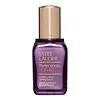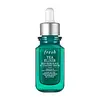What's inside
What's inside
 Key Ingredients
Key Ingredients

 Benefits
Benefits

 Concerns
Concerns

 Ingredients Side-by-side
Ingredients Side-by-side

Dimethicone
EmollientWater
Skin ConditioningPolysilicone-11
Hdi/Trimethylol Hexyllactone Crosspolymer
Silica
AbrasiveButylene Glycol
HumectantCaprylyl Methicone
Skin ConditioningSigesbeckia Orientalis Extract
Skin ConditioningSalvia Sclarea Extract
AntiseborrhoeicColeus Forskohlii Root Extract
EmollientChamomilla Recutita Flower Extract
MaskingPEG-10 Dimethicone
Skin ConditioningHydrolyzed Collagen
EmollientPalmaria Palmata Extract
Skin ProtectingGlycyrrhiza Glabra Root Extract
BleachingSilybum Marianum Extract
Skin ConditioningHordeum Vulgare Extract
EmollientPadina Pavonica Thallus Extract
Skin ConditioningArtemia Extract
Skin ConditioningPantethine
EmollientAlgae Extract
EmollientChlorella Vulgaris Extract
Skin ConditioningCholesterol
EmollientSqualane
EmollientBoswellia Serrata Extract
Skin ConditioningZea Mays Kernel Extract
Glycine Soja Protein
EmulsifyingCaffeine
Skin ConditioningWhey Protein
Skin ConditioningLinoleic Acid
CleansingLecithin
EmollientCollagen
MoisturisingAcetyl Hexapeptide-8
HumectantPalmitoyl Oligopeptide
CleansingGlycerin
HumectantYeast Extract
Skin ConditioningPolyquaternium-51
Skin ConditioningPhytosphingosine
Skin ConditioningTriticum Vulgare Germ Oil
EmollientDecarboxy Carnosine Hcl
Skin ConditioningPolysorbate 40
EmulsifyingPentylene Glycol
Skin ConditioningPropanediol
SolventLauryl PEG-9 Polydimethylsiloxyethyl Dimethicone
Skin ConditioningEthylhexylglycerin
Skin ConditioningAmmonium Acryloyldimethyltaurate/Vp Copolymer
Sodium PCA
HumectantPolymethylsilsesquioxane
Glyceryl Polymethacrylate
Zinc PCA
HumectantPropylene Glycol Dicaprate
EmollientSodium Chondroitin Sulfate
Skin ConditioningSodium Hyaluronate
HumectantIsohexadecane
EmollientPEG-8
HumectantTocopheryl Acetate
AntioxidantPolysorbate 80
EmulsifyingDisodium Distyrylbiphenyl Disulfonate
UV AbsorberLaureth-12
EmulsifyingAcrylamide/Sodium Acryloyldimethyltaurate Copolymer
Emulsion StabilisingCaprylyl Glycol
EmollientAminopropyl Ascorbyl Phosphate
AntioxidantXanthan Gum
EmulsifyingSodium Beta-Sitosteryl Sulfate
Skin ConditioningSodium Chloride
MaskingSodium Hydroxide
BufferingParfum
MaskingDisodium EDTA
BHT
AntioxidantPhenoxyethanol
PreservativeMica
Cosmetic ColorantCI 77891
Cosmetic ColorantDimethicone, Water, Polysilicone-11, Hdi/Trimethylol Hexyllactone Crosspolymer, Silica, Butylene Glycol, Caprylyl Methicone, Sigesbeckia Orientalis Extract, Salvia Sclarea Extract, Coleus Forskohlii Root Extract, Chamomilla Recutita Flower Extract, PEG-10 Dimethicone, Hydrolyzed Collagen, Palmaria Palmata Extract, Glycyrrhiza Glabra Root Extract, Silybum Marianum Extract, Hordeum Vulgare Extract, Padina Pavonica Thallus Extract, Artemia Extract, Pantethine, Algae Extract, Chlorella Vulgaris Extract, Cholesterol, Squalane, Boswellia Serrata Extract, Zea Mays Kernel Extract, Glycine Soja Protein, Caffeine, Whey Protein, Linoleic Acid, Lecithin, Collagen, Acetyl Hexapeptide-8, Palmitoyl Oligopeptide, Glycerin, Yeast Extract, Polyquaternium-51, Phytosphingosine, Triticum Vulgare Germ Oil, Decarboxy Carnosine Hcl, Polysorbate 40, Pentylene Glycol, Propanediol, Lauryl PEG-9 Polydimethylsiloxyethyl Dimethicone, Ethylhexylglycerin, Ammonium Acryloyldimethyltaurate/Vp Copolymer, Sodium PCA, Polymethylsilsesquioxane, Glyceryl Polymethacrylate, Zinc PCA, Propylene Glycol Dicaprate, Sodium Chondroitin Sulfate, Sodium Hyaluronate, Isohexadecane, PEG-8, Tocopheryl Acetate, Polysorbate 80, Disodium Distyrylbiphenyl Disulfonate, Laureth-12, Acrylamide/Sodium Acryloyldimethyltaurate Copolymer, Caprylyl Glycol, Aminopropyl Ascorbyl Phosphate, Xanthan Gum, Sodium Beta-Sitosteryl Sulfate, Sodium Chloride, Sodium Hydroxide, Parfum, Disodium EDTA, BHT, Phenoxyethanol, Mica, CI 77891
Water
Skin ConditioningGlycerin
HumectantSimmondsia Chinensis Seed Oil
EmollientHelianthus Annuus Seed Oil
EmollientIsostearyl Alcohol
EmollientPropanediol
Solvent1,2-Hexanediol
Skin ConditioningNiacinamide
SmoothingPentylene Glycol
Skin ConditioningButylene Glycol Cocoate
EmulsifyingCellulose
AbsorbentMacrocystis Pyrifera Extract
Skin ConditioningCamellia Sinensis Leaf Extract
AntimicrobialArgania Spinosa Kernel Oil
EmollientHyaluronic Acid
HumectantCeramide NP
Skin ConditioningTocopheryl Acetate
AntioxidantTocopherol
AntioxidantMaltodextrin
AbsorbentAcrylates/C10-30 Alkyl Acrylate Crosspolymer
Emulsion StabilisingParfum
MaskingEthylcellulose
Xanthan Gum
EmulsifyingSodium Hyaluronate
HumectantSodium Hydroxide
BufferingAdenosine
Skin ConditioningBiosaccharide Gum-1
HumectantPhytosphingosine
Skin ConditioningHydrogenated Lecithin
EmulsifyingChlorphenesin
AntimicrobialPotassium Sorbate
PreservativeSodium Benzoate
MaskingLimonene
PerfumingLinalool
PerfumingCitronellol
PerfumingGeraniol
PerfumingWater, Glycerin, Simmondsia Chinensis Seed Oil, Helianthus Annuus Seed Oil, Isostearyl Alcohol, Propanediol, 1,2-Hexanediol, Niacinamide, Pentylene Glycol, Butylene Glycol Cocoate, Cellulose, Macrocystis Pyrifera Extract, Camellia Sinensis Leaf Extract, Argania Spinosa Kernel Oil, Hyaluronic Acid, Ceramide NP, Tocopheryl Acetate, Tocopherol, Maltodextrin, Acrylates/C10-30 Alkyl Acrylate Crosspolymer, Parfum, Ethylcellulose, Xanthan Gum, Sodium Hyaluronate, Sodium Hydroxide, Adenosine, Biosaccharide Gum-1, Phytosphingosine, Hydrogenated Lecithin, Chlorphenesin, Potassium Sorbate, Sodium Benzoate, Limonene, Linalool, Citronellol, Geraniol
 Reviews
Reviews

Ingredients Explained
These ingredients are found in both products.
Ingredients higher up in an ingredient list are typically present in a larger amount.
Glycerin is already naturally found in your skin. It helps moisturize and protect your skin.
A study from 2016 found glycerin to be more effective as a humectant than AHAs and hyaluronic acid.
As a humectant, it helps the skin stay hydrated by pulling moisture to your skin. The low molecular weight of glycerin allows it to pull moisture into the deeper layers of your skin.
Hydrated skin improves your skin barrier; Your skin barrier helps protect against irritants and bacteria.
Glycerin has also been found to have antimicrobial and antiviral properties. Due to these properties, glycerin is often used in wound and burn treatments.
In cosmetics, glycerin is usually derived from plants such as soybean or palm. However, it can also be sourced from animals, such as tallow or animal fat.
This ingredient is organic, colorless, odorless, and non-toxic.
Glycerin is the name for this ingredient in American English. British English uses Glycerol/Glycerine.
Learn more about GlycerinParfum is a catch-all term for an ingredient or more that is used to give a scent to products.
Also called "fragrance", this ingredient can be a blend of hundreds of chemicals or plant oils. This means every product with "fragrance" or "parfum" in the ingredients list is a different mixture.
For instance, Habanolide is a proprietary trade name for a specific aroma chemical. When used as a fragrance ingredient in cosmetics, most aroma chemicals fall under the broad labeling category of “FRAGRANCE” or “PARFUM” according to EU and US regulations.
The term 'parfum' or 'fragrance' is not regulated in many countries. In many cases, it is up to the brand to define this term.
For instance, many brands choose to label themselves as "fragrance-free" because they are not using synthetic fragrances. However, their products may still contain ingredients such as essential oils that are considered a fragrance by INCI standards.
One example is Calendula flower extract. Calendula is an essential oil that still imparts a scent or 'fragrance'.
Depending on the blend, the ingredients in the mixture can cause allergies and sensitivities on the skin. Some ingredients that are known EU allergens include linalool and citronellol.
Parfum can also be used to mask or cover an unpleasant scent.
The bottom line is: not all fragrances/parfum/ingredients are created equally. If you are worried about fragrances, we recommend taking a closer look at an ingredient. And of course, we always recommend speaking with a professional.
Learn more about ParfumPentylene glycol is typically used within a product to thicken it. It also adds a smooth, soft, and moisturizing feel to the product. It is naturally found in plants such as sugar beets.
The hydrophilic trait of Pentylene Glycol makes it a humectant. As a humectant, Pentylene Glycol helps draw moisture from the air to your skin. This can help keep your skin hydrated.
This property also makes Pentylene Glycol a great texture enhancer. It can also help thicken or stabilize a product.
Pentylene Glycol also acts as a mild preservative and helps to keep a product microbe-free.
Some people may experience mild eye and skin irritation from Pentylene Glycol. We always recommend speaking with a professional about using this ingredient in your routine.
Pentylene Glycol has a low molecular weight and is part of the 1,2-glycol family.
Learn more about Pentylene GlycolPhytosphingosine is a phospholipid naturally found in our skin as a building block for ceramides.. It helps moisturize, soothe, and protect skin.
Phytosphingosine contributes to your skin's natural moisturizing factor (NMF). The NMF is responsible for hydration, a strong barrier, and plasticity. Our NMF decreases with age. Increasing NMF leads to more healthy and hydrated skin.
Studies show products formulated with NMF ingredients help strengthen our skin's barrier. Having a healthy skin barrier reduces irritation and increases hydration. Our skin barrier is responsible for having plump and firm skin. It also helps protect our skin against infection, allergies, and inflammation.
Fun fact: Phytosphingosine is abundant in plants and fungi.
More ingredients that help boost collagen in skin:
Learn more about PhytosphingosinePropanediol is an all-star ingredient. It softens, hydrates, and smooths the skin.
It’s often used to:
Propanediol is not likely to cause sensitivity and considered safe to use. It is derived from corn or petroleum with a clear color and no scent.
Learn more about PropanediolSodium Hyaluronate is hyaluronic acid's salt form. It is commonly derived from the sodium salt of hyaluronic acid.
Like hyaluronic acid, it is great at holding water and acts as a humectant. This makes it a great skin hydrating ingredient.
Sodium Hyaluronate is naturally occurring in our bodies and is mostly found in eye fluid and joints.
These are some other common types of Hyaluronic Acid:
Learn more about Sodium HyaluronateSodium Hydroxide is also known as lye or caustic soda. It is used to adjust the pH of products; many ingredients require a specific pH to be effective.
In small amounts, sodium hydroxide is considered safe to use. However, large amounts may cause chemical burns due to its high alkaline.
Your skin has a natural pH and acid mantle. This acid mantle helps prevent harmful bacteria from breaking through. The acid mantle also helps keep your skin hydrated.
"Alkaline" refers to a high pH level. A low pH level would be considered acidic.
Learn more about Sodium HydroxideTocopheryl Acetate is AKA Vitamin E. It is an antioxidant and protects your skin from free radicals. Free radicals damage the skin by breaking down collagen.
One study found using Tocopheryl Acetate with Vitamin C decreased the number of sunburned cells.
Tocopheryl Acetate is commonly found in both skincare and dietary supplements.
Learn more about Tocopheryl AcetateWater. It's the most common cosmetic ingredient of all. You'll usually see it at the top of ingredient lists, meaning that it makes up the largest part of the product.
So why is it so popular? Water most often acts as a solvent - this means that it helps dissolve other ingredients into the formulation.
You'll also recognize water as that liquid we all need to stay alive. If you see this, drink a glass of water. Stay hydrated!
Learn more about WaterXanthan gum is used as a stabilizer and thickener within cosmetic products. It helps give products a sticky, thick feeling - preventing them from being too runny.
On the technical side of things, xanthan gum is a polysaccharide - a combination consisting of multiple sugar molecules bonded together.
Xanthan gum is a pretty common and great ingredient. It is a natural, non-toxic, non-irritating ingredient that is also commonly used in food products.
Learn more about Xanthan Gum